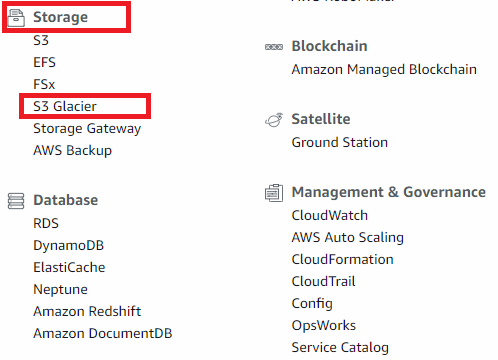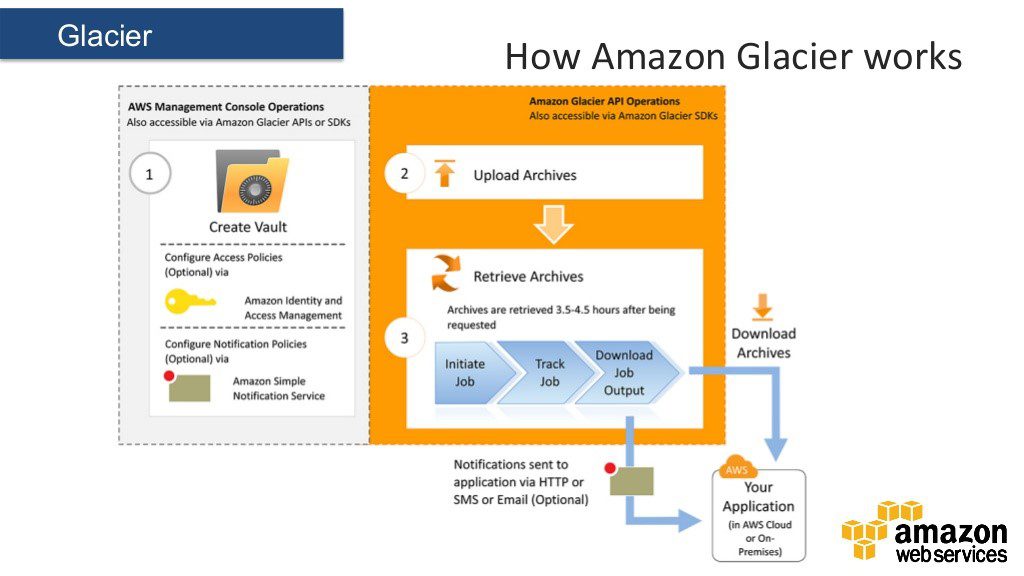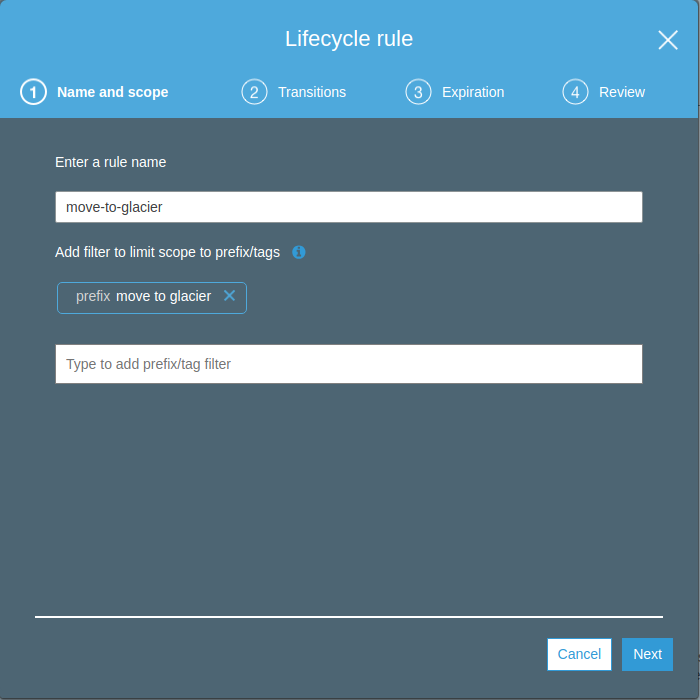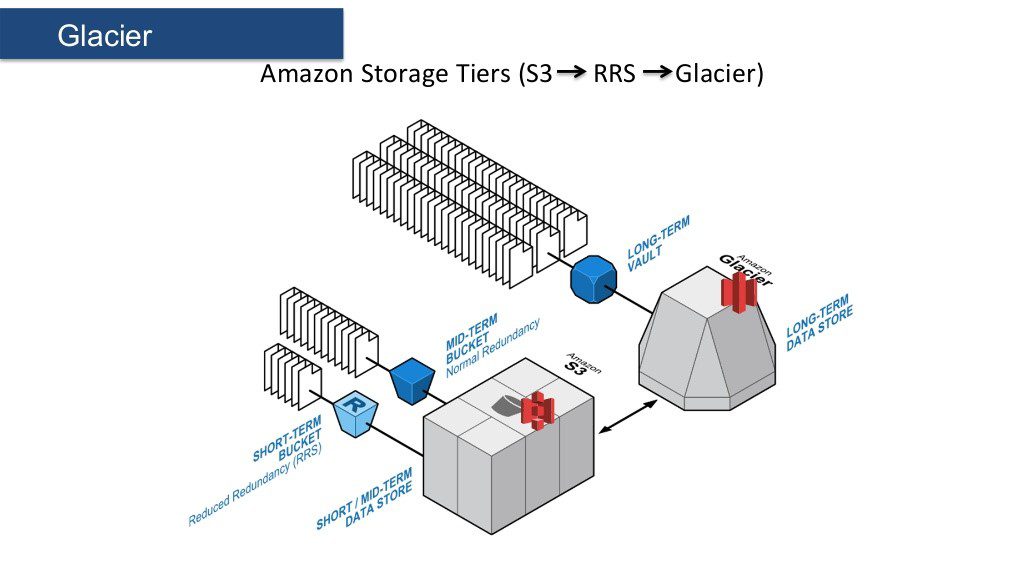How To Upload Files To Amazon S3 Glacier
Amazon S3 Glacier is a cloud service dedicated to storing archived data that is not likely to be retrieved oftentimes. In other words, it is designed for infrequently accessed information. Glacier has a high latency of data retrieval but offers low pricing and high safety for stored archives. In this commodity, nosotros are going to explain Glacier's information uploading nuances.
Working with S3 Glacier
Amazon Glacier is a quite cost-constructive solution for the prolonged keeping of important data that is not used ofttimes. It is a nice choice for a visitor that possesses a lot of outdated electronic documentation and wants cheap but safe storage. Amazon does not urge its customers to store more or less there, though Glacier'due south optimal usage model foresees archives to exist kept for a longer period of time.
FREE WHITEPAPER
Archiving to the Cloud: Cold Storage
How to use cold storage - like Amazon S3 Glacier - cost-finer and efficiently? Notice out in our whitepaper:

![]()
Glacier storage ensures high redundancy, as an archive is stored inside multiple facilities at once. The archived information is secured with AES-256 encryption on the server-side. Boosted condom is ensured by Vault Lock policies.

The monthly storage price is fixed and varies from $0.004 to $0.013 per 1GB, depending on the region. Retrieval is free for up to x GB a calendar month. The deletion of data is free if this data was stored for more than 3 months, otherwise, an early deletion fee would exist practical.
Further reading Amazon S3 Glacier Pricing Explained
Amazon S3 Glacier Deep Archive storage class is meant for deep archival data that is only needed very infrequently only can't be deleted. Storing 1Gb will cost you $0.00099 per month.

Users have to prepare upwardly jobs in order to download archives or archive lists in vault snapshots. These jobs run in the background and usually take several hours to complete. There are two ways to upload data
- Directly upload to Glacier from the user'due south instance.
- Using Amazon S3 lifecycle policies to move information from S3 to Glacier.
Allow's explore both of them in detail.
Directly Upload to Glacier

There is no Magician in the AWS console for uploading archives to Glacier vaults. Users accept to do that by creating requests via Glacier Balance API or use AWS Software Development Kits (or SDKs) for their ain applications. All that requires some coding and AWS provides SDKs with Glacier support for the post-obit programming languages:

- C++.
- Get.
- Java.
- JavaScript in Node.js.
- .NET.
- PHP.
- Python.
- Ruddy.
This fashion of uploading is, therefore, about convenient for users with programming skills or for tertiary-political party providers who offer their own tools for S3 Glacier storage management.
Amazon provides two alternative schemes of direct upload to Glacier:
- Upload in a unmarried operation
- Upload in parts
Single operation choice is bachelor for up to 4GB of data. Upload in parts is recommended for archives bigger than 100MB: it transfers each office in a parallel session (size of parts is specified past the user). If a session fails, only this function would be missing so a user will have to resend only it lone. No additional fees are charged for multipart upload.
Scheduled Upload to Glacier from S3

Data that is already in AWS's cloud can be moved to Glacier storage with the help of the lifecycle policy feature. If you do non urgently demand some of the files stored in an S3 saucepan, it is possible to schedule their transfer to a less costly place - that is what these policies are for.
You lot can create a policy via your AWS console, in the Properties page of your S3 bucket. But make certain that the Archive to the S3 Glacier Storage Grade checkbox is selected. Afterwards a new policy is created, your data will be transferred from S3 to Glacier after the time specified. Information technology will not prove upwardly in Glacier storage, however - y'all still could view information technology from the S3 saucepan. Yous would have to restore this archive from Glacier earlier whatsoever other operations would be bachelor.
Further reading How to Upload Files to S3 Glacier with Lifecycle Rules
Scheduled upload to Glacier is the best option in case the user's data is already in S3. It is also a more than user-friendly way for companies with a great flow of electronic documentation considering it allows an ambassador to automate the archiving of a large number of items. On the downside, this additional tier of storage results in extra storage fees plus a asking fee for archiving to Glacier.

Summary
Both means of transferring data to Glacier storage accept certain pros and cons. Allow us summarize their differences to brand the comparison easier.
| Directly Upload to Glacier | Archiving from S3 | |
| Time consumption | Multipart upload allows faster archiving | Scheduled archiving jobs automate the procedure and save time |
| Fees that utilise | Glacier storage fee |
|
| Preconditions | An interface must be set up programmatically in order to send uploading requests to AWS | Information must be stored in S3 in order to be transferred to Glacier |
| Visibility | Archives are visible on the Glacier control panel | Archives are not visible on the Glacier side and must be managed via the S3 command panel |
MSP360 Fill-in supports Amazon Glacier and you can perform directly uploads of the data to your Glacier storage. It's as well possible to create and manage lifecycle policies and transfer archives to Glacier directly from the MSP360 Fill-in user interface.
Gratis WHITEPAPER
Providing Backup-as-a-Service with MSP360 and Amazon S3
- Amazon S3 storage classes and their use cases
- Pricing principles of Amazon S3
- Monthly cost estimates for Amazon S3 cloud storage and MSP360 Managed Backup – and more

![]()
Source: https://www.msp360.com/resources/blog/compare-amazon-glacier-direct-upload-and-glacier-upload-through-amazon-s3/
Posted by: overtonfriect.blogspot.com

0 Response to "How To Upload Files To Amazon S3 Glacier"
Post a Comment